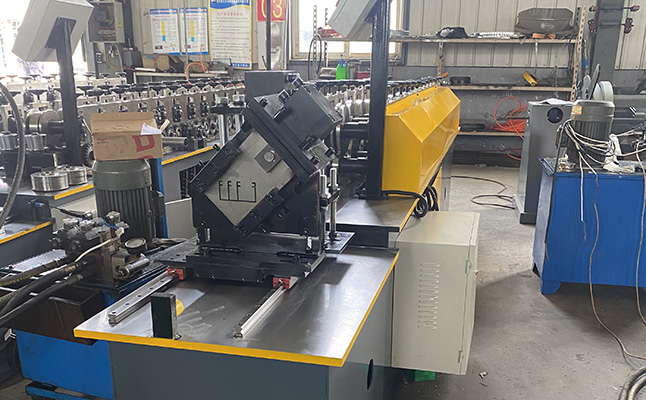
Price:
Detailed Introduction
A Cold Bending Machine is a device used to shape metal materials into various curved forms at ambient temperature. Here is an in - depth look at this equipment:
Working Principle
Cold bending machines operate based on the principle of applying external forces to cause plastic deformation of metal workpieces. The machine typically uses a set of rollers, dies, or a combination of both. When the metal workpiece, such as a bar, pipe, or sheet, is fed into the machine, the rollers or dies exert pressure on it. The relative movement between these components and the workpiece gradually bends the metal according to the designed curvature. For example, in a three - roll cold bending machine, two lower rolls are fixed, and the upper roll can be adjusted in height. As the workpiece passes through the rolls, the upper roll's downward pressure forces the workpiece to bend around the lower rolls, creating a curved shape.
Types and Their Features
Roll - type Cold Bending Machine
Features: This type is commonly used for bending bars, pipes, and thin - walled profiles. It offers relatively high production efficiency and can achieve continuous bending operations. The bending radius can be adjusted by changing the position of the rolls or using different - sized rolls. For instance, in a pipe - bending roll - type machine, the rolls are designed to conform to the outer diameter of the pipe, ensuring a smooth and even bend without deforming the pipe's cross - section too much.
Applications: Widely used in the construction industry for bending steel bars to form the reinforcement structures of concrete elements. It is also used in the manufacturing of furniture, where metal pipes are bent into various shapes for frames.
Die - type Cold Bending Machine
Features: Die - type cold bending machines are more suitable for complex - shaped bending tasks. They use a set of dies that are precisely machined to the desired shape. The workpiece is placed between the upper and lower dies, and when the press mechanism is activated, the dies close, forcing the metal to take on the shape of the dies. This type of machine can achieve high - precision bending, especially for small - batch production of parts with intricate shapes.
Applications: In the automotive industry, die - type cold bending machines are used to manufacture components like brackets and frames with specific curvatures. In the electronics industry, they can be used to bend thin metal sheets for enclosures or internal components.
Main Components
Frame
The frame provides the structural support for the entire cold bending machine. It is usually made of high - strength steel, which is fabricated and welded to ensure sufficient rigidity. A stable frame is crucial as it can withstand the large forces generated during the bending process without deforming, thus guaranteeing the accuracy of the bending operation.
Bending Mechanism
This is the core part of the cold bending machine. For roll - type machines, it consists of rolls, their supporting shafts, and the drive system for roll rotation. The rolls are made of high - quality alloy steel, often with a hardened surface to resist wear. In die - type machines, the bending mechanism includes the upper and lower dies, as well as the press mechanism (such as a hydraulic cylinder or a mechanical press) that applies the force to close the dies.
Adjustment System
The adjustment system allows for changes in the bending parameters. In roll - type machines, it can adjust the distance between the rolls, which in turn changes the bending radius. This can be done through manual screw - type adjustments or automated hydraulic or servo - motor - driven systems. For die - type machines, the adjustment system may include mechanisms to fine - tune the position of the dies, ensuring accurate alignment for consistent bending results.
Control System
Modern cold bending machines are equipped with control systems. These can range from simple manual control panels to advanced computer - numerical - control (CNC) systems. The control system enables operators to set parameters such as the bending angle, radius, and speed. In CNC - controlled machines, complex bending sequences can be programmed, allowing for the production of parts with multiple bends and varying curvatures.
Technical Parameters
Bending Capacity
This parameter indicates the maximum size and thickness of the metal workpiece that the machine can bend. For example, a cold bending machine for steel bars may have a bending capacity of up to 32mm in diameter, meaning it can handle steel bars with a diameter of 32mm or less. The bending capacity is determined by the power of the drive system, the strength of the frame, and the design of the bending mechanism.
Bending Precision
It refers to the accuracy with which the machine can achieve the desired bending angle and radius. High - precision cold bending machines can achieve bending angle accuracies within ±1 degree and bending radius accuracies within
Copyright © Cangzhou Guochen Cold Bending Machinery Equipment Co., Ltd. Rights Reserved Sitemap | Technical Support